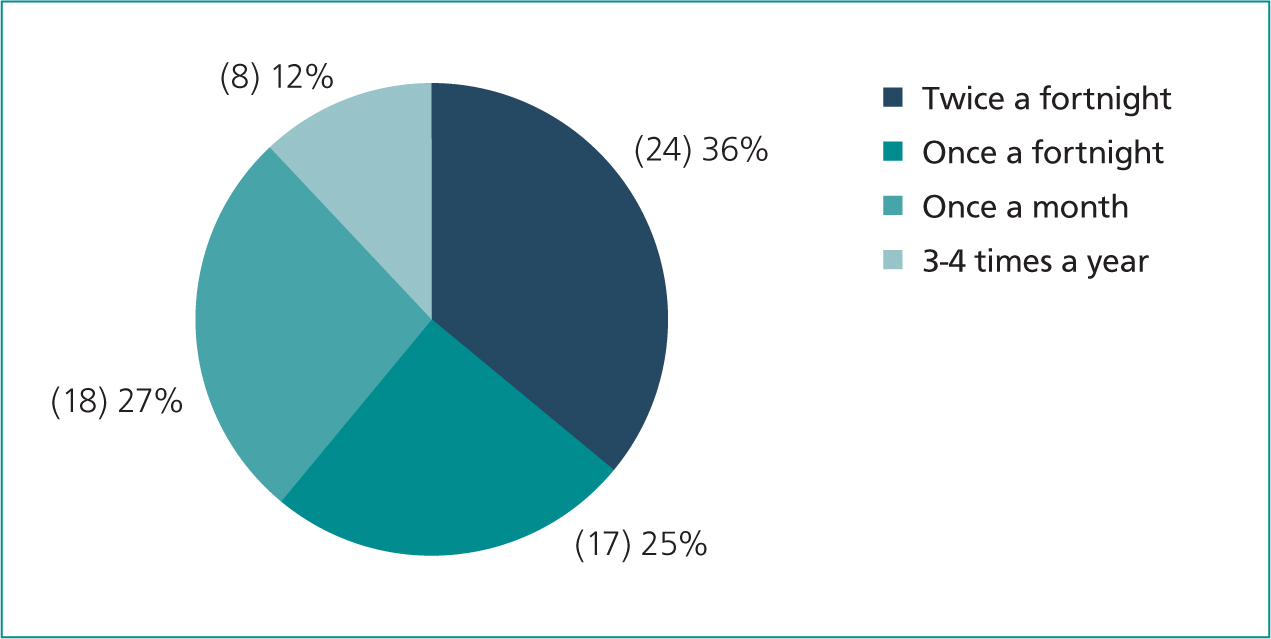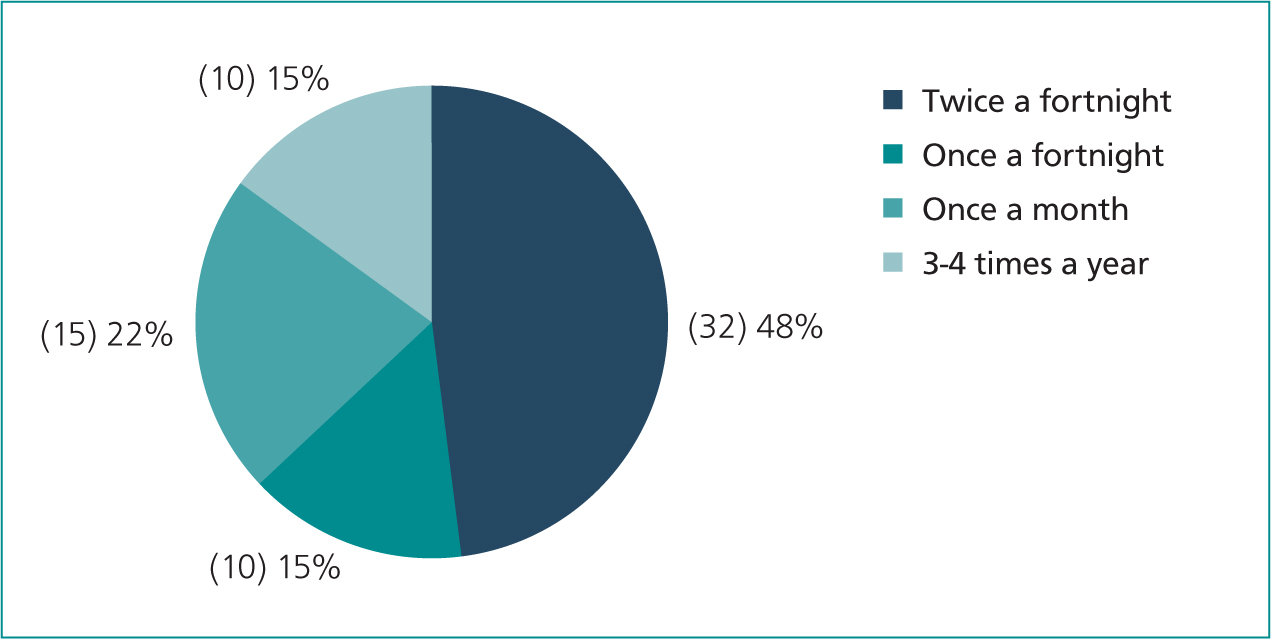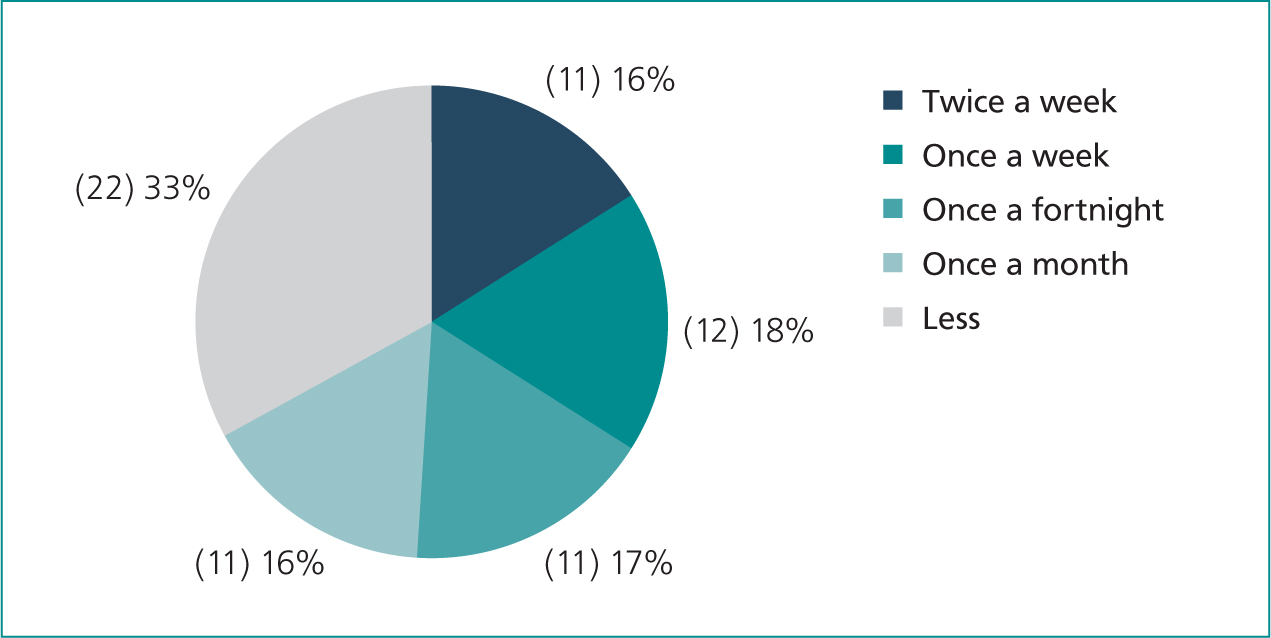British and French Bulldogs have exceeded the popularity of Labradors in the UK (Kennel Club, 2017). This has led to increased breeding, with many unaware of pre-existing health issues (Packer et al, 2012). Bulldog breeds display a cork-screw tail from coccygeal vertebrae malformation (Asher et al, 2009), while reproductive issues occur because of the dorsoventrally flattened pelvic canal of the dam and larger cranial circumference of the fetus. As a result of over-breeding, neonatal conditions include cleft palate/lips, anasarca puppies, splayed legs, spina bifida and hydrocephalus (Bell et al, 2012). Defects diagnosed later are brachycephalic obstructive airway syndrome (BOAS), pyoderma, cherry eye, dermoid cysts, heart murmurs, entropion, and neurological issues (Wiles et al, 2017). To improve welfare conditions, cross breeding may be of benefit (Sargan, 2018).
Literature review
‘Brachycephaly’ describes skulls with a high cephalic index (where width to length skull ratio is high). Genetic mutations in these breeds cause skull bones to grow shorter and wider, displaying a juvenile appearance with ventrally orientated olfactory bulbs (Georgevsky et al, 2014). The resultant conformation causes breathing, skin, eye, spinal and birthing problems. If untreated, these conditions can have life threatening implications, requiring specialised nursing.
Respiratory system
Bulldog breeds have elongated soft palates, stenotic nares, excessive nasopharyngeal turbines and hypoplastic tracheas (Pichetto et al, 2014). Dogs with BOAS are severely dyspnoeic with inspiratory stridor, resulting in exercise intolerance. This can aggravate heat stress, leading to hyperthermia (Bruchim et al, 2017).
During anaesthetics, intubation improves respiration by increasing tracheal height and width by 10% (Liu at al, 2018). Registered veterinary nurses (RVNs) must consider that due to a narrowed trachea, bulldog breeds require the use of a smaller endotracheal tube. Compared with non-brachycephalic breeds, bulldog breeds are 1.57 times more likely to have extra anaesthetic complications and 4.33 times more likely to have a difficult recovery because of impaired oxygen absorption and their predisposition to regurgitate (Gruenheid et al, 2018).
Skin/eye problems
Bulldog breeds display dermatitis earlier than other breeds, indicating a higher genetic predisposition (Wilhem et al, 2010). This is caused by irritation and lack of ventilation within facial, tail and vulval folds.
Distichiasis worsens corneal and conjunctival irritation through the presence of hairs at the Meibomian gland emerging abnormally at the eyelid. Other ocular emergencies include globe and nictitian gland prolapse (White and Brennan, 2018).
Skeletal system
Bulldog breeds are predisposed to congenital vertebral malformations. Abnormal caudal vertebrae are responsible for the presence of hemivertebrae and vertebral ankylosis. Spinal malformations can therefore occur with intervertebral disk herniation (O'Neill et al, 2018). Chondrodysplasia is another heritable disorder. British Bulldogs are prone to hip and elbow dysplasia, luxating shoulders and patellae, cruciate ligament rupture and torsional pelvic deformity (Pedersen, et al, 2016). It is the RVN's role to advise owners on the handling of these patients.
Reproductive system
Although French Bulldogs have smaller litters than British bulldogs, they are prone to obstructive dystocia because of disproportion of whelps and dams (Tønnessen et al, 2012). Neonatal survival depends on resuscitation procedures by the nursing team. Breeds most susceptible to neonatal mortality are Pugs, Boston terriers and Bulldogs (Freitas et al, 2016).
Relevance of research
Nursing implications will be assessed through the distribution of an online survey collecting qualitative and quantitative data, identifying the RVN's involvement with bulldog breeds. Objectives are to provide a rationale for the increase in brachycephalic population, examine the relationship between bulldog breeds and time spent in practice, and question the RVN's role in raising breeder awareness.
Methodology
Based on similar studies, 100 RVNs were required for sampling to allow for statistical analysis. Only RVNs working in a veterinary practice could complete the survey. There was no limitation for number of RVNs answering that worked together. Veterinary surgeons and student veterinary nurses were excluded. All voluntary participants were members of closed RVN Facebook groups that published the survey. Prior to publication ethical approval was gained by Edinburgh Napier's Ethics Committee. For confidentiality and data protection, all responses remained anonymous.
The online tool ‘NoviSurvey’ was used for questionnaire design and data analysis. Most questions were multiple choice with single selection answers. Three questions included open-ended text answers. Three questions had a ‘Not Applicable’ option. This allowed participants to skip questions irrelevant to them and exclude practice details if appropriate.
The questionnaire consisted of 26 questions as follows:
Data collected were exported to a Microsoft Excel spreadsheet and Minitab15. Chi-squared contingency tables (X2= (O-E) 2/E) were used to examine the relationship between variables; p-values of <0.05 identified statistical significance.
Results
103 survey responses were received. In accordance with ethics committee requirements, respondents were able to withdraw answers at any stage of the process. Optional answering led to 36 unusable responses, only partially completed with most questions unanswered.
Demographics
Out of the 67 responses, 61% worked in a small animal practice, 15% in veterinary hospitals, 10% in mixed practice, 8% in referral centres and 6% in charity practices. Only 6% of RVNs owned bulldog breeds, but 41% had a friend or relative that did.
Clinical
Most respondents saw bulldog breeds every day (36%), or more than once a day (43%). Only 21% treated more bull-dog breeds than other breeds.
Most practices (51%) only performed Caesarean sections in emergencies, with 28% of RVNs always admitting bulldog breeds in labour. Fewer (9%) worked in a practice that allowed elective Caesarean sections, and RVNs in charity practices (12%) refused Caesarean sections for animals belonging to breeders.
Only 10% allowed elective surgery from days 58–59 of gestation; the average gestation length is 63 days (Smith, 2007). More (37%) performed surgery on days 60–61. Whereas, the majority (53%) did not allow elective Caesarean sections until days 62–63 of pregnancy. RVNs (60%) saw lower survival rates in litters born before day 60.
The study revealed 42% were involved in Caesarean section in bulldog breeds 3–4 times a year, with 19% involved less frequently. Only one respondent had never been involved, 21% saw Caesarean sections roughly once a month, 5% once a fortnight, 4% once a week, 4% twice a week or more, and 3% daily. A contingency table showed no significance between involvement and type of practice (Chi-sq = 4.947, DF = 6, p-value = 0.0551). As charity and referral practices were underrepresented, responses from these two categories were combined to allow for accurate analysis.
Few (15%) identified genetic abnormalities with every litter, and 28% every other litter. Most RVNs (46%) rarely saw abnormalities and 11% never saw issues at birth. Out of 67 respondents, only 22 answered the text box question on what genetic abnormalities were seen. Answers were: cleft palates (9/22), anasarcas (3/22), cleft lips (3/22), oversized heads (3/22) general deformities (3/22) mummified pups (2/22), skin disease (2/22), undershot jaws (2/22), hernias (2/22), spinal abnormalities (2/22), eye issues (2/22). Individual responses included ‘dermoid cysts’, ‘heart murmurs’, ‘tail abnormalities’, ‘tiny nares’, ‘premature pups’, ‘aborting’, ‘pups without a working anus’, and ‘swimmers’ (swimmer puppy syndrome).
Many RVNs (55%) identified a link between genetic abnormalities occurring in bulldog breeds with previous litters. Comparisons were made with expected data of genetic abnormalities of 330 mixed and pure breeds, where 83.6% of canines sampled had genetic disease variants (Donner et al, 2018). A chi-squared test displayed significant difference between the prevalence of genetic abnormalities in mixed and pure breeds compared with the survey results of bulldog breeds (Chi-sq = 19.000, DF = 1, p-value = <0.001).
Many (81%) adapted usual pre-anaesthetic protocols to suit bulldog breeds, 50 participants completed the text box question. Answers included pre-oxygenation (28/50), lower drug dose of acepromazine (12/50), anti-emetics (10/50), no premedication (7/50), placing an intravenous catheter (5/50), preparation of crash kit (4/50), limitation of movement (2/50), closer monitoring (2/50), sternal recumbency (2/50). Individual responses included ‘nursing in a quiet area’, ‘pulling the tongue out further than other breeds for intubation’, ‘clipping the surgical site before anaesthetic’, and ‘using alfaxalone instead of propofol’
Many (85%) adapted recovery protocols; 51 respondents completed this textbox question. Responses included: prolonged intubation (38/51), post-operative oxygenation (20/51), sternal recumbency (15/51), elevated head (9/51), monitoring for 1 hour (11/51), presence of crash kit (5/51), removal of heat pads (2/51), recovery in the intensive care unit (1/51).
Some RVNs (36%) saw skin fold dermatitis twice a fort-night, 25% once a fortnight, 27% once a month, and 12% 3–4 times a year (Figure 1). Eye conditions were seen twice a fortnight (48%), once a fortnight (15%), once a month (22%), 3–4 times a year (15%) (Figure 2). During summer, 16% of VNs treated heat stroke twice a week, 18% once a week, 17% once a fortnight, 16% once a month and 33% less frequently (Figure 3).



The study revealed 24% were involved in corrective surgeries once a week or more, 12% once a fortnight, 19% once a month, 30% 3-4 times a year, 2% once a year and 13% less frequently. There was no significant difference between type of practice and frequency of corrective surgeries (Chisq = 6.098, DF = 3, p-value = 0.107).
Opinions
Most practices (72%) have good breeder relationships. Although, 96% of RVNs believe not enough is done to raise breeder awareness of bulldog breeds' conditions, and many (72%) think insurance companies should be stricter with bulldog breeds.
Numerous RVNs (99%) believe social media has a link with the recent increase in brachycephalic ownership. Out of these, 82% believe RVNs are responsible for raising public awareness of bulldog breeds' predispositions.
Discussion
Increase in population
The majority (99%) believe social media is a cause for increased ownership, supporting the Campaign for the Responsible Use of Flat-Faced Animals, which urges companies not to use brachycephalic breeds for media advertising (Ravetz, 2016). RVNs should not post brachycephalic images on social media as this promotes brachycephalic conformation in a positive manner (BVNA, 2017).
Experience of owning French Bulldogs with predis-posed conditions has discouraged owners from getting this breed again (Sandoe et al, 2017), perhaps explaining the limited number of RVNs owning bulldog breeds as a result of experience of treating these patients.
Caesarean sections
No significance was found in this study between neonatal survival rates and the date of pregnancy at the time of surgery. However, timely planned Caesarean sections result in better dam and litter survival rates (Smith, 2007), explaining why 60% of RVNs surveyed reported lower survival rate for Caesarean sections before day 60.
Most Caesarean sections (73%) were emergencies. It is likely these were French Bulldogs because of their popularity (Kennel Club, 2017), and greater susceptibility to obstructive dystocia than uterine inertia. A study by Evans and Adams (2010) outlined bulldog breeds as having the highest Caesarean section rates. British Bulldogs, French Bulldog and Boston Terriers have a Caesarean section rate of over 80%.
Four RVNs worked at a charity practice where only emergency Caesarean sections were performed as a result of charity policies. The People's Dispensary for Sick Animals (PDSA) do not provide veterinary services for breeders because of limited resources. On their website, they outline three other reasons for their stance, i.e, damaging health, increasing unwanted pets, and planning involved (PDSA, 2019).
Genetic abnormalities
Despite Sridevi et al (2016) identifying anasarca as a common issue after Caesarean sections, in this survey cleft palates were more common. RVNs are often the first contact with newborn pups so should assess and voice any concerns to the veterinary surgeon so timely care can be given. Skeletal abnormalities were the second most common genetic abnormalities. Guevar et al (2014) outline congenital vertebral malformations to be the main issue in brachycephalic breeds.
Although RVNs mentioned heart murmurs, there is limited evidence suggesting bulldog breeds are predis-posed. In contrast, there are numerous studies on Cavalier King Charles Spaniels and murmur intensity (Ljungvall et al, 2014).
Perioperative nursing
Corrective surgeries were not uncommon procedures for RVNs to be involved in, suggesting a high prevalence of breed-related disorders requiring surgery. Surgeries can include nasal skin fold transposition flaps, eyelid surgery, soft palate resection, rhinoplasty, and laryngeal saccule resection (Benlloch-Gonzalez et al, 2013).
The most common pre-anaesthetic nursing consideration was pre-oxygenation. Allowing pre-oxygenation for 5 minutes encourages lungs to fill to functional residual capacity, so if the patient was to hypoventilate or become apnoeic later, they would not de-saturate for several minutes (Grubb, 2010).
Administration of anti-emetics were stated by many. Ree et al (2017) encouraged administration of steroids to reduce oedema and anti-emetics to prevent vomiting or regurgitation.
Some RVNs reported veterinary surgeons administering lower drug doses or no premedication for brachycephalic patients. De Cramer et al (2017) concluded that a low dose medetomidine premedication improved puppy survival rate post Caesarean section.
An individual respondent had stated veterinary surgeons used alfaxalone instead of propofol for induction of bulldog breeds. Alfaxalone is less likely to cause apnoea post induction (Adshead, 2014). In contrast, De Cramer, et al (2017) advised induction using propofol, maintained with isoflurane for brachycephalic Caesarean sections. However, a study by Amengual et al (2013) displayed a similar patient response to both induction agents.
RVN's role
It has become common for breeders and owners to lack concern over brachycephalic problems in part because of veterinary professionals stating they are ‘normal’ for the breed (BVNA, 2017). Therefore, RVNs must be careful with how they phrase their advice so that conformation issues are not normalised. Most RVNs (95%) agreed that more needed to be done.
A high percentage (72%) felt insurance companies should be stricter with bulldog breeds. Many RVNs deal with insurance claims so may have addressed breed-related conditions. A study of insurance claims revealed these breeds were less healthy than non-brachycephalic breeds. This study excluded conditions related to brachycephalic conformation (British Veterinary Association, 2017).
Limitations
Despite focusing on French and British Bulldogs, survey questions did not always mention these two specific breeds, so RVNs may have answered using their knowledge of all brachycephalic breeds. The Kennel Club categorise the following breeds as brachycephalic: 'Pug, French Bulldog, Bulldog, Boston Terrier, Shih Tzu, Pekingese, Affenpinscher, Cavalier King Charles Spaniel, Lhasa Apso and Griffon Bruxellois' (Kennel Club, 2019).
Another limitation is the accuracy of responses. Participants from the same practice may have answered, duplicating some findings. Recall bias must also be considered as respondents may see cases over a prolonged time period and part time workers may have a smaller case load to discuss. Skewed results could also have occurred as a result of participants' lack of knowledge of breed-related terms used in the survey.
Conclusion
Overall, this study has identified nursing implications of over-breeding of French and British Bulldogs seen daily through anaesthetic monitoring and recovery, educating owners, and improving breeder awareness. Breeding of bulldog breeds is still growing in popularity and RVNs believe social media has encouraged ownership of bulldog breeds. Awareness of this issue is being raised by veterinary organisations, but RVNs must now take a more active role in educating breeders on safer breeding that is of benefit to the animal's welfare. This emphasises the need for more specific training, perhaps through continued professional development.


